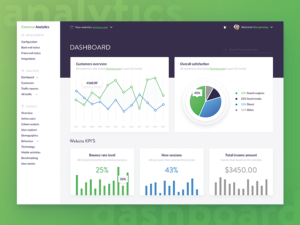
Learn how to optimise your website for SEO with Simply IT’s top 8 tips straight from our experts here in Zanzibar.
Search engine optimisation (SEO) plays a vital role in the success of online businesses as a crucial digital marketing tool. In this article, we delve into the significance of implementing a robust onsite SEO strategy. One that has an immediate and direct impact on improving webpage rankings across search engines – not only Google but all Search Engines.
For those unfamiliar with SEO, we suggest visiting our SEO Knowledgebase Articles pages to gain further insights and discover what Simply IT can do for your businesses. But for now, let’s explore our nine-step comprehensive introduction to onsite SEO, which provides you with the knowledge to build a powerful strategy.
What Is Onsite SEO?
SEO consists of two essential components: onsite and offsite methods, each playing a crucial role. Onsite SEO, also known as on-page SEO, focuses on making physical changes and optimisations directly on a website. Whereas offsite SEO, or off-page SEO, enhances a website’s visibility through external factors such as incoming links from other websites (also called backlinks).
Major search engines, such as Google, keep their search algorithms strictly private. This practise protects against fraudulent ranking manipulation, guaranteeing the integrity and quality of the search engine’s service. However, it is commonly acknowledged that onsite SEO, specifically the characteristics discussed below, is critical in getting good positions on search engine results pages (SERPs). These efforts attempt to provide an outstanding user experience for people who utilise the search engine.
To develop a meaningful onsite SEO strategy, it is crucial to identify the weaknesses present on your website. The following steps outline an effective strategy in order of priority. To achieve your desired rank results, conduct your onsite SEO strategy by exploring your website’s gaps in the same order.

Step 1 – Check for Major Technical SEO Issues That Impact Crawling & Indexing
The Robots.txt File
Optimising your website is useless if search engines cannot access it. One common issue that can hinder crawling is the robots.txt file. Most websites have this file, which serves as a guidebook for search engines, instructing them on what should and should not be crawled. To check its contents, visit your website’s homepage and add “/robots.txt” to the end of the domain in the URL bar
Meta Robots Directives
Unlike the robots.txt file, meta robot rules do not dictate what search engines should or should not crawl. Instead, as a page is crawled, the meta robots directives guide the search engine to either ‘index’ or ‘noindex’ the page. If the meta robot directive ‘noindex’ is present on a page, it will prevent it from appearing in SERPs.
The Sitemap.xml File
While the presence or absence of a sitemap.xml file may not have the same impact as the preceding points, having this file can significantly increase the number of pages indexed in SERPs and the speed with which they are indexed. Visit [your homepage]/sitemap.xml to see if you have a sitemap.xml file.

Step 2 – Place Keywords in Meta Tags, URLs & HTML Tags
It is critical to optimise webpages, especially the homepage, for relevant search phrases. These terms, referred to as ‘keywords,’ match the user’s purpose with the material you want them to locate on your website, and each page should have an own collection of related keywords.
Once you have a list of keywords for each page, it is important to incorporate them in specific areas:
- Title Tag & Meta Description. The title tag appears purple on Google’s search engine results pages (SERPs). It should include the keywords naturally and attract the reader’s attention, limited to around 60 characters. The meta description, shown in black text, is limited to around 160 characters and should provide additional enticing information to encourage clicks.
- URL. The webpage’s address displayed in the browser’s address bar should ideally include the keyword. It is best to optimise the URL when the page is initially published, as subsequent changes would require permanent redirects (301 links) and addressing redirect chains to maintain the technical health of the domain.
- HTML Heading Tags. HTML heading tags, such as H1, H2, etc., establish the hierarchy of headings for search engines to comprehend. The page’s main heading, typically the H1, should incorporate the primary keyword.
Step 3 – Create Meaningful Content
Website content is an important tool for directing users to the appropriate area of your site. It should be detailed, concise, reader-centered, and SEO-optimized. High-quality content is essential, and including user-friendly language written by content professionals frequently results in significant increases in ranking performance.
What we mean by user-centered is content that answers what a user is most likely to be looking for. So try to think why a user is on this particular page and what the user wants to know – not necessarily what you want to tell them!

Step 4 – Add Valuable Schema Mark-Up
The Schema.org mark-up language is a collaborative code that enables search engines to display specific information from your web page in search engine results pages (SERPs), hence increasing click-through rates (CTR). Specific pages are eligible for different schema types. Product pages, for example, can benefit from pricing and availability snippets.
Make sure you think again about what is valuable content. For a hotel room page it may be amenities, cost, size, bedsize, capacity, sea-view, which floor is the room on, towels provided bathroom facilities etc. All of these entities can be put in a schema for Google. Schema markup is absolutely vital for anyone with a business website.
Step 5 – Optimise for Page Experience
The term “page experience” refers to the different factors that shape a visitor’s webpage experience. This comprises characteristics like as webpage layout, design, page loading speed (Core Web Vitals), mobile usability, and the number of clicks required for a user journey, among others. It is critical to have a user-friendly website design and architecture, therefore designing websites that prioritise user experience, responsive design, and fundamental web vitals is critical. These elements have a strong impact on conversion rate optimisation and user engagement.
Step 6 – Identify Keyword Gaps
To optimise your website’s potential in search engine results pages (SERPs), undertake an SEO competitive keyword gap research. This entails comparing your website to rival listings in order to identify pages or keywords for which they rank but you do not. You can add new pages or enhance existing material to include other ways of describing your services or products if necessary.
You can cast a wider net by increasing your website’s relevancy to a bigger number of in-demand keywords; we advocate using the following tools:
- Keyword Planner
- SEMrush (Pro Version)
- Keywords Everywhere

Step 7 – Create a Blog Strategy
Blogs, like step six, can target question-related keywords that are commonly asked by persons in the early stages of the buying or inquiry journey. This broadens the net to include a larger internet audience.
You, or a blog writing service, can publish blogs that answer people’s questions, putting your brand in front of them early on. Blogs can help readers move from the information acquisition phase to the purchase or enquiry stage, and then direct traffic to your website’s product or service pages.

Let Simply IT handle your Website’s Rank & Visibility
Simply IT can take a hands-on role in your website ranking as well as it’s design, or we can simply advise you. Either way you can guarantee great results that exceed your expectations. We provide reports that actually show the improvement against your competitors of utilising robust SEO strategies.
If you want to learn more about how multi-language sites and how they affect SEO, give us a call and we will explains how multi-language sites affect SEO and how we set up a multi-language site properly to achieve great results.
Tell Simply IT team about your brand, your unique selling point and what you plan to achieve with your online digital marketing and SEO project and will provide a game-winning strategy.
The more information we have, the more equipped we are to deliver the perfect website, app, SEO or SEM strategies that work for you.
We have over 40 happy clients in Zanzibar, Tanzania, East Africa, Asia and Europe.
SEO Marketing Articles
See All
How Google Changes Affect your Website Ranking
What is Google Planning in May 2021? Last May 2020 Google announced that page experience signals would be featured more and more in Google Search

The Value of News Articles
No one can fully understand the changing nature of Search Engine Optimisation (SEO). Google’s constantly changes their search algorithm and it seems that brands and

What are the best SEO Elements?
Search Engine Optimization involves methods that increase a website’s visibility and improve rankings in search engine sites through organic or natural search results. On-page SEO




